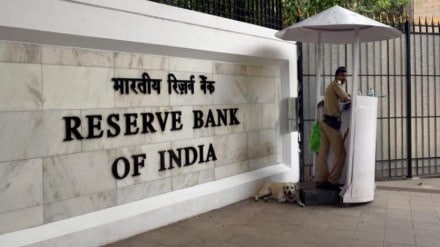By Chirayu Sharma | Dr Badri Narayanan Gopalakrishnan
In a surprise move, the Reserve Bank of India (RBI) recently announced a 50 basis points cut in the repo rate—significantly more than what market participants had anticipated. While the magnitude of the cut caught many off guard, it is largely viewed as a timely and necessary intervention given the current state of the Indian economy. The decision reflects the central bank’s commitment to supporting growth, especially amid global uncertainties and domestic challenges. With inflation appearing to be under control and growth still recovering, the RBI has opted for a more accommodative stance to boost liquidity and encourage lending. The timing of this move was crucial, as multiple indicators—such as easing inflation, a softening labour market, and stable macroeconomic fundamentals—had already begun pointing toward the need for monetary easing. Understanding these signals helps explain why such a policy shift was foreseeable and highlights the broader impact it is expected to have on the economy.
One of the key reasons that allowed the RBI to make such a bold move is the sharp decline in retail inflation. Consumer prices in India slowed faster than expected, falling to 3.16% in April—the lowest level recorded in six years, and well below the RBI’s medium-term target of 4%. This drop is primarily attributed to falling food prices, supported by fuller granaries due to a better-than-expected monsoon. Additionally, the global decline in commodity prices, especially crude oil (of which India is a major importer), along with a stronger Indian rupee, has helped moderate import-related inflation. These favourable conditions provide the RBI with much-needed room to focus on growth without the immediate threat of rising prices. As inflation remains within the acceptable range, it strengthens the case for a low interest rate environment in the near term.
RBI Governor Sanjay Malhotra recently acknowledged that India’s economic growth is “lower than our aspirations,” citing a notable slowdown from 9.2% in 2024 to 6.5% in 2025. In this context, the recent repo rate cut is not only justified but imperative. By reducing the cost of borrowing, the cut encourages banks to lend more, enabling businesses to invest in expansion and production. Lower interest rates also make consumer loans more affordable, boosting demand in key sectors like housing, automobiles, and retail. Additionally, reduced rates may lead to currency depreciation, which enhance export competitiveness and support industrial growth. Overall, the rate cut is aimed at reviving both investment and consumption, reinforcing the RBI’s clear focus on supporting growth in a low-inflation environment.
Alongside easing inflation, India is also witnessing a notable decline in unemployment. The unemployment rate dropped from 8.3% in December 2024 to 5.1% in April 2025, indicating strengthening labour market conditions. This simultaneous fall in both inflation and unemployment presents an ideal macroeconomic environment for the Reserve Bank of India to prioritize growth. With inflation well within the RBI’s comfort zone and employment improving, there is room for further monetary easing to support economic expansion. A continued reduction in the repo rate can amplify growth momentum by encouraging credit flow, boosting production, and sustaining job creation. The alignment of low inflation and falling unemployment offers a unique window for the RBI to act decisively in nurturing a more robust and inclusive recovery.
Financial market response towards rate cut
The financial markets responded swiftly to the RBI’s rate cut announcement. The Nifty50 surged past the significant 25,000-point mark, signalling strong investor optimism. Leading the rally was the Nifty Bank index, which jumped by over 800 points, driven by expectations of increased credit demand and improved lending activity in the banking sector.
In the bond market, the yield on 10-year government securities declined, reflecting softened inflation expectations and renewed investor confidence in the country’s economic growth prospects. The drop in yields also indicates a positive shift in market sentiment toward long-term stability.
On the currency front, the Indian Rupee experienced slight downward pressure against the US Dollar following the rate cut. While lower interest rates make domestic borrowing more affordable, they also reduce the appeal of Rupee-denominated assets for foreign investors seeking higher yields. As a result, the INR temporarily weakened before stabilizing. However, some market analysts caution that the Rupee may continue to face depreciation risks, particularly if US interest rates stay elevated for an extended period.
Impact on House-Holds
Beyond the markets, Indian households—especially the middle class—stand to feel the direct impact of the RBI’s rate cuts. With a cumulative 100 basis point reduction since February, home loans linked to the repo rate have become more affordable. Several banks are now offering mortgage rates below 8%, lowering EMIs and encouraging big-ticket purchases like homes and vehicles. This supports domestic consumption, a key driver of economic growth.
However, the low-interest rate environment has its downsides, particularly for risk-averse savers. Fixed deposits (FDs), a traditionally preferred investment avenue for their safety and assured returns, are becoming increasingly unattractive, which leads to the flow of the funds to the Non-Fixed Income Securities Like Mutual fund, ETF etc. This also poses a challenge for retirees and conservative investors, whose returns may no longer keep pace with inflation, thereby eroding their real purchasing power.
Disclaimer: Views expressed are personal and do not reflect the official position or policy of FinancialExpress.com. Reproducing this content without permission is prohibited.
